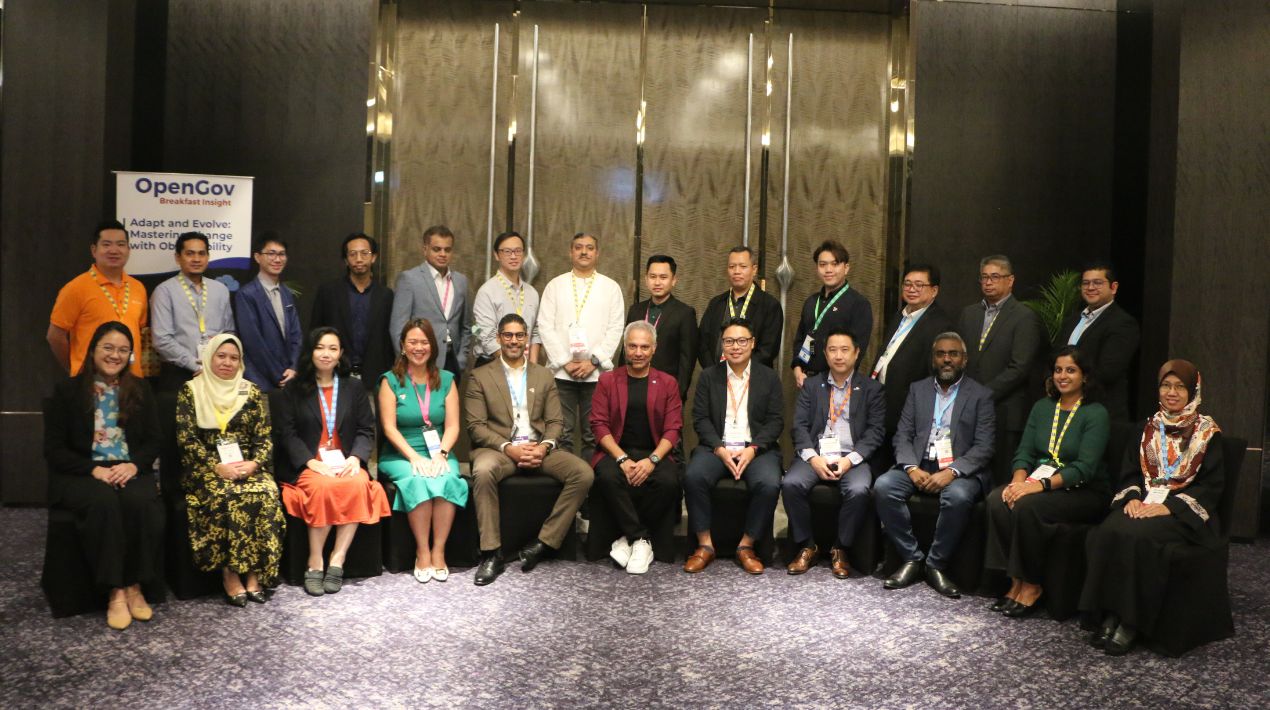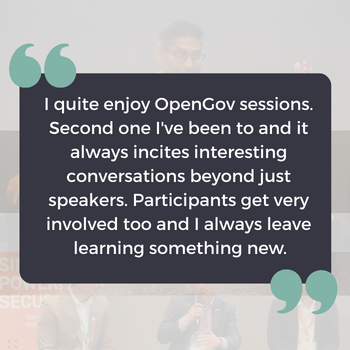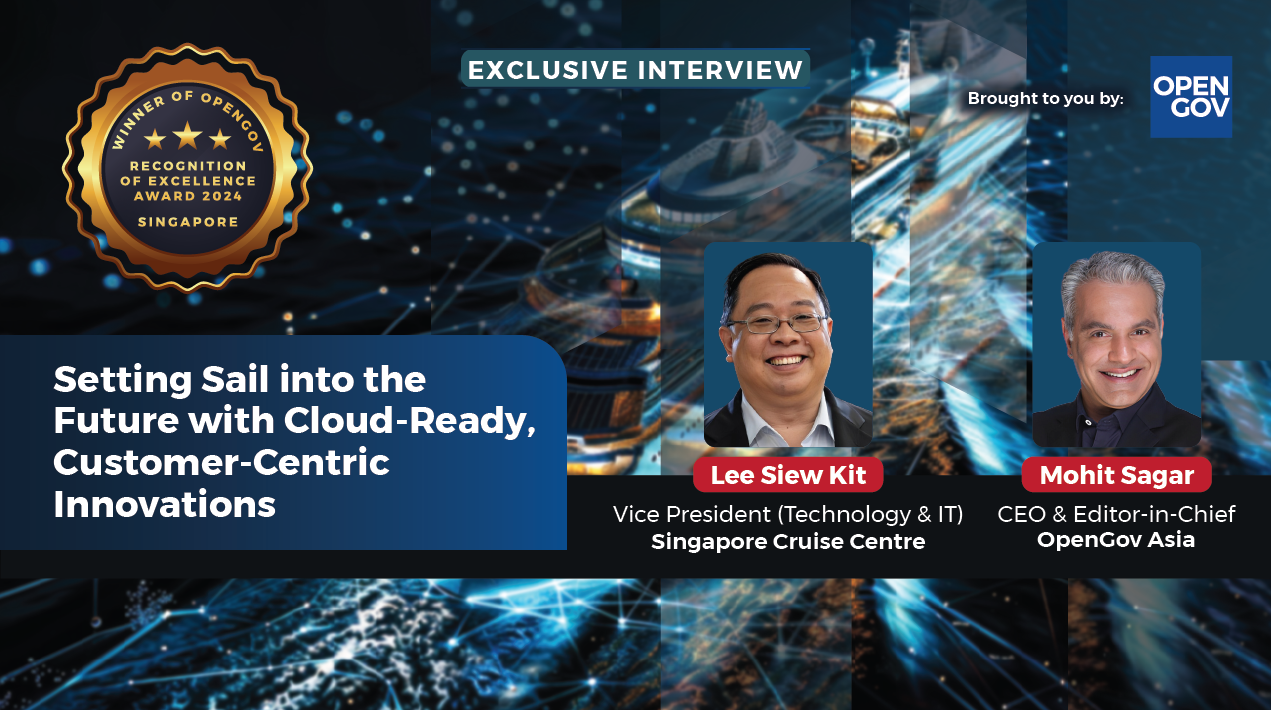
|
Getting your Trinity Audio player ready...
|
Amidst the swiftly evolving technological landscape, Malaysia stands at the forefront of a dynamic and transformative era. With a forward-looking approach spanning sectors such as banking, healthcare, and education, the country has embraced innovation through six pivotal measures to propel its digital advancement.
These include enhancing cybersecurity, facilitating digital transformation, advocating for digital literacy, promoting innovation and research, undertaking e-government transformation, and fostering digital entrepreneurship and startup initiatives.
Malaysia is strategically focused on catalysing digital transformation in the public sector, enhancing economic competitiveness through digitalisation, and building robust digital infrastructure. Additionally, the nation is committed to preparing a skilled workforce for the digital age, fostering inclusivity in the digital society, and establishing a secure and ethical digital environment. Through these initiatives, Malaysia aims to assert itself as a leader in the global digital arena.
 Leveraging a unified platform for digital transformation offers organisations numerous advantages, fundamentally reshaping operations and fostering innovation. Key benefits include increased productivity and enhanced visibility. By embracing an integrated platform that minimises redundancy, streamlines manual efforts, and amplifies automation, teams can prioritise strategic initiatives over routine tasks.
Leveraging a unified platform for digital transformation offers organisations numerous advantages, fundamentally reshaping operations and fostering innovation. Key benefits include increased productivity and enhanced visibility. By embracing an integrated platform that minimises redundancy, streamlines manual efforts, and amplifies automation, teams can prioritise strategic initiatives over routine tasks.
Furthermore, integrating AIOps with machine learning is a powerful technique for optimising the management of enterprise-distributed settings. The fusion of AIOps and ML enables organisations to cultivate a more adaptable and agile IT environment, ensuring operational excellence amid the evolving dynamics inherent in distributed systems.
Enhanced observability significantly improves operational efficiency by empowering organisations to streamline processes, reduce downtime, and rationalise operations through a comprehensive understanding of system behaviours and potential areas for enhancement.
Observability is also crucial for cybersecurity compliance, offering quick threat detection and real-time monitoring. It enables prompt threat identification and proactive responses by analysing network traffic, records, and user actions.
In today’s rapidly evolving digital landscape, the imperative for observability has become more critical than ever. Organisations must adhere to regulatory compliance, elevate customer and citizen experiences, enhance operational efficiency, and fortify security measures.
Enterprises must integrate on-premises and cloud technologies for improved visibility in today’s tech-driven environment. This integration enables businesses to monitor digital operations, discover performance issues, manage resources, and predict challenges with deep visibility.
AI/ML significantly improves IT resource management and operations in hybrid cloud environments by addressing issues like tool sprawl and resource constraints. This enables IT professionals to prioritise client experience, potentially boosting revenue through enhanced client satisfaction and loyalty.
AI/ML is crucial in swiftly identifying and resolving issues, reducing remediation time, and optimising value delivery in dynamic hybrid cloud environments. Integrating AI and ML enhances operational efficiency, empowering organisations to prioritise customer-centric activities, leading to positive outcomes and potential revenue growth.
The OpenGov Breakfast Insight on 23 February 2024 at Sofitel Kuala Lumpur Damansara delved into the dynamics of the transformative epoch and the potential of AIOps in enhancing IT management.
This gathering convened various experts in Malaysia, fostering the exchange of experiences and the generation of innovative ideas for future strategies to empower IT executives to proactively identify and resolve potential issues, minimising disruptions to critical services.
Opening Remarks

Mohit Sagar, CEO and Editor-in-Chief at OpenGov Asia, kicked off the session by extending a warm welcome to all attendees. He expressed gratitude to both the attendees and panellists for their active participation, acknowledging their role as catalysts for change in the future digital transformation era.
Mohit then encouraged participants to share their real-world experiences of integrating AIOps into their organisations, fostering meaningful dialogue and exchanging insights on its impact on their journeys.
“As many of you have incorporated observability and artificial intelligence (AIOps) into your organisations, I request you to share your real-world experiences and their impact on your digital transformation journey,” Mohit asked.
“Integrating AIOps has been a game-changer for us. The predictive analytics and automated response capabilities have significantly reduced our mean time to resolution,” said a representative from a technology company. “It is not just about fixing issues faster but also about identifying and addressing potential problems before they impact our operations. This proactive approach has saved us both time and resources.”
Mohit considered observability in today’s world an important component, providing a framework for this progress and an in-depth knowledge of the intricacy of digital systems. Businesses can acquire real-time insights into their digital operations by utilising tracking and data collection solutions, allowing for proactive issue identification and resolution and making it more efficient in operating its system.
“In today’s world of rapid technology breakthroughs, Digital Evolution through Observability offers a long-term strategy to promote organisational growth and innovation,” Mohit said. “However, the shift toward observability is more than periodic troubleshooting; it represents a broader transformational journey.”
Organisations that employ observability are better positioned to optimise efficiency, improve user experiences and encourage a culture of continuous improvement. In essence, Digital Evolution through Observability highlights the nature of staying ahead in the digital age by embracing a proactive and adaptive approach based on full system visibility.
Malaysia has embraced a strategy that underscores the rapid adoption of digital technology across all sectors of the economy. The government actively invests in developing digital skills, innovative ecosystems, and infrastructure in collaboration with private businesses.
Mohit believed Malaysia must have a system that navigates seamlessly through the dynamics of digital transformation and advocates for the adoption of observability and AIOps as the solution.
“Public and private sector organisations can modernise their IT systems using AIOps. Real-time monitoring of data sources is made possible by observability, which ensures that information will be accessible when needed,” he asserts “It ensures that services can rely on accurate information by assisting in the identification and resolution of problems with data availability, quality, and system integrations.”
Mohit shares that observability and AIOps also help to discover areas for process automation, resource optimisation, and service level enhancements – all of which lead to more effective and efficient services. It can lead to a significant improvement in overall operational efficiency.
“By proactively addressing performance concerns through observability and AIOps, organisations can identify and rectify potential issues before they escalate and ensure a seamless experience,” Mohit explains. “This approach leads to quicker response times, allowing teams to swiftly anticipate and address challenges, resulting in an enhanced user experience with minimal disruptions and efficient, reliable service delivery.”
Welcome Address

Bharat Bedi, Managing Director for Asia Pacific & Japan at SolarWinds Inc., stressed that “artificial intelligence is all-encompassing”, highlighting the transformative influence of AI on the future of technology and its significant impact across diverse industries.
He explored the importance of AI-driven solutions, emphasising their role in revolutionising processes, fostering innovation, and reshaping the landscape of the Asia Pacific & Japan region.
“Investing your energy and efforts in strategic endeavours is more crucial than engaging in repetitive tasks, which lack productivity,” Bharat believes, “In today’s dynamic business environment, leveraging AI is essential. AI-driven solutions not only streamline processes but also pave the way for innovation in new frontiers.”
Bharat urged the audience to recognise AI as a fundamental element for future success in the region, playing a crucial role in efficient resource allocation, promoting innovation, and maintaining a competitive edge in a swiftly evolving business environment.
SolarWinds has enhanced its monitoring and observability solutions by integrating advanced AI capabilities. This allows customers to redirect excessive time spent reviewing logs, monitoring, performance metrics, or addressing disruptive, low-value alerts to higher productivity or innovative tasks.
Their Observability and IT Management platform autonomously detect anomalies and uncommon patterns amidst the extensive stream of constantly generated data. This empowers customers to focus on tasks delivering significant value to their organisations.
Barat shared that SolarWinds can provide comprehensive solutions to help organisations enhance system efficiency.
- Hybrid Cloud Observability: A simple, powerful and scalable observability helps in managing end-to-end performance of the hybrid architecture
- SolarWinds Observability: A SaaS offering that provides integrated and extensive visibility for cloud-native, on-premises, and hybrid technology stack, enabling optimal service levels and user satisfaction with critical business services.
- IT Service Management: Aids in streamlining help desk ticketing, managing IT assets, and supporting end-users maximise productivity and accelerate resolution with lightning-fast time to value
- Database Management: The database solutions help with monitoring, evaluating, diagnosing, and improving database performance, health and pinpointing performance trouble areas for resolution. They also seamlessly integrate on-premises and cloud database visibility, control, and management across various vendors.
“The current goal is extracting valuable business insights from data to enhance data-driven decision-making, all while minimising reliance on speculation and avoiding misleading leads,” Bharat concluded. “And overcoming this challenge is notably more feasible with the incorporation of AI.”
Power Talk
To stay competitive amidst the rapid shifts in today’s technology landscape, organisations must possess the capability to adapt and evolve. An integral component of effective change management involves ensuring observability and visibility across many domains, spanning infrastructure, applications, IT operations, and data.
A meticulously integrated observability strategy empowers IT professionals to pinpoint the root causes of issues, enhance performance, and make informed decisions that align with business objectives. Moreover, it facilitates seamless collaboration between development and operations teams, cultivating a culture of ongoing enhancement.

Jacky Cheong, Head of Enterprise, Data Governance (EDG) at CelcomDigi Berhad, emphasises that maintaining robust data governance practices is paramount for organisations in today’s data-driven landscape, and leveraging the scalability and flexibility of cloud services can be instrumental in achieving this goal.
“Cloud services offer a range of features that can enhance data visibility and control, including robust access controls, comprehensive audit trails, and sophisticated encryption protocols,” he says. “By leveraging these capabilities, organisations can effectively monitor and manage their data, tracking who accesses it and how it is utilised.”
Jacky illustrated his point by sharing that cloud providers frequently furnish user-friendly tools allowing organisations to monitor and oversee their data in real-time, thereby ensuring its security and compliance with regulations. This increased visibility empowers organisations to preemptively detect and resolve potential data process issues, mitigating risks and upholding data integrity and dependability.
Moreover, cloud-based data analytics tools can be invaluable in monitoring data quality and flagging anomalies or errors as they occur. This capability enables organisations to take prompt corrective action, ensuring the data remains accurate and trustworthy for informed decision-making.
“Cloud services often include robust disaster recovery and backup solutions, ensuring that data remains available and reliable despite unforeseen events. This can be particularly beneficial for organisations seeking to mitigate the risk of data loss or downtime,” he elaborated.

Vincent Leo, Head of Digital Initiative Studio (IT) at Plus Malaysia Berhad, agrees that observability plays a pivotal role in shaping the customer experience within digital environments, and it offers comprehensive insights into the performance of applications and infrastructure. This visibility empowers organisations to proactively identify and resolve issues, ensuring a reliable and seamless customer journey.
For instance, real-time anomaly detection facilitated by observability enables organisations to rectify errors swiftly before they impact decision-making processes. However, achieving such seamless observability comes with challenges, including the intricate nature of modern applications and the imperative of a cohesive approach between DevOps and security teams.
Vincent acknowledges that security is a paramount concern in digital and cloud realms, given the looming risks of data breaches, financial fraud, ransomware, malware, and phishing attacks. Observability can substantially enhance security postures by furnishing a holistic view of the customer’s digital journey, fortifying customer data protection, and actively thwarting malicious attacks.
Through meticulous data collection and analysis across every system, application, and infrastructure component, observability enables DevOps teams to promptly detect and respond to security incidents at any juncture during the customer journey. Integrating automated testing tools further assures quality maintenance across the entire customer experience development lifecycle.
Nonetheless, he also expressed apprehension that for organisations to harness observability optimally, they must guarantee that data is not solely accessible and precise but also analysed promptly. This instantaneous analysis is pivotal in delivering the necessary level of observability to improve customer experience and reinforce security measures.

Bharat Bedi, Managing Director of Asia Pacific & Japan at SolarWinds Inc., explained that organisations could proactively align their observability and visibility strategies to effectively manage and navigate change, especially in the context of evolving IT operations and cloud environments, by adopting several key practices.
Firstly, organisations should prioritise establishing a unified approach to observability, ensuring that all relevant teams have access to the same tools and data. This can help streamline communication and collaboration, enabling teams to identify and address issues as they arise quickly.
Additionally, they should invest in technologies that provide comprehensive visibility across their entire IT landscape, including cloud services, hybrid environments and on-premises infrastructure. This holistic approach can help organisations better understand their IT ecosystem, allowing them to make more informed decisions and better manage change.
Organisations can leverage tools and technologies to achieve visibility throughout their IT business. This may include deploying monitoring solutions that provide real-time insights into their IT systems’ performance and implementing analytics tools to help identify trends and patterns in their data.
Moreover, organisations should focus on data integration and interoperability, ensuring their various IT systems can communicate and share data effectively. By adopting these practices, organisations can gain a more comprehensive view of their IT business, enabling them to manage change better and drive productivity gains.
Bharat is convinced that organisations can achieve productivity gains through observability by embracing automation and machine intelligence and eliminating organisational. Automation can streamline repetitive tasks and processes, freeing time for IT teams to focus on more strategic initiatives.
“Machine intelligence can help organisations make sense of the vast amounts of data generated by their IT systems, enabling them to identify patterns and trends that may not be apparent to human analysts,” he opines. “By breaking down organisational styles and fostering a culture of collaboration, organisations can ensure that their IT teams work together towards common goals rather than in isolation.”
Closing Remarks
Bharat expressed gratitude to the participants actively engaged in discussions on this topic, acknowledging their valuable contributions and perspectives that significantly enriched the dialogue. Their enthusiastic participation fostered a productive and practical environment, while their collaborative spirit enhanced collective understanding, providing valuable insights to lay the foundation for future steps in Malaysia.
Bharat reiterated that AIOps, with its artificial intelligence, has the potential to optimise system monitoring and detect anomalies more quickly and accurately. Concurrently, observability, which centres on a thorough comprehension of systems and applications, furnishes a holistic and comprehensive perspective of the entire IT environment.
Amidst the intricacies of the present technological landscape, the significance of integrating AIOps and observability becomes more pertinent. A good understanding of the interconnection between these two tools can serve as a strong foundation for improving operational performance and efficiency.
“We know that cyberattack is possible to occur anytime, and I believe AI will be the solution for it,” Bharat believes. “By harnessing observability, organisations can identify potential issues earlier, reduce downtime, and enhance the user experience.”
Observability, with its focus on gaining in-depth insights into the functioning of systems and applications, becomes a crucial tool in maintaining operational efficiency. Its capability to identify and analyse real-time patterns empowers organisations to proactively address issues, fostering enhanced system reliability and minimising disruptions.
Bharat was delighted that the forum had provided valuable food for thought and ideas for participants from both the private and public sectors. He remains optimistic about the continuity of this constructive spirit, anticipating ongoing engagement and the exchange of innovative ideas in future OpenGov Breakfast Insights.
“It is truly an honour to be among such incredible folks, all united by a common vision and mission in digital transformation preparedness,” Bharat said. “I am confident the insights we have gathered during this forum can seamlessly translate into practical implementation within our respective spheres.”
















